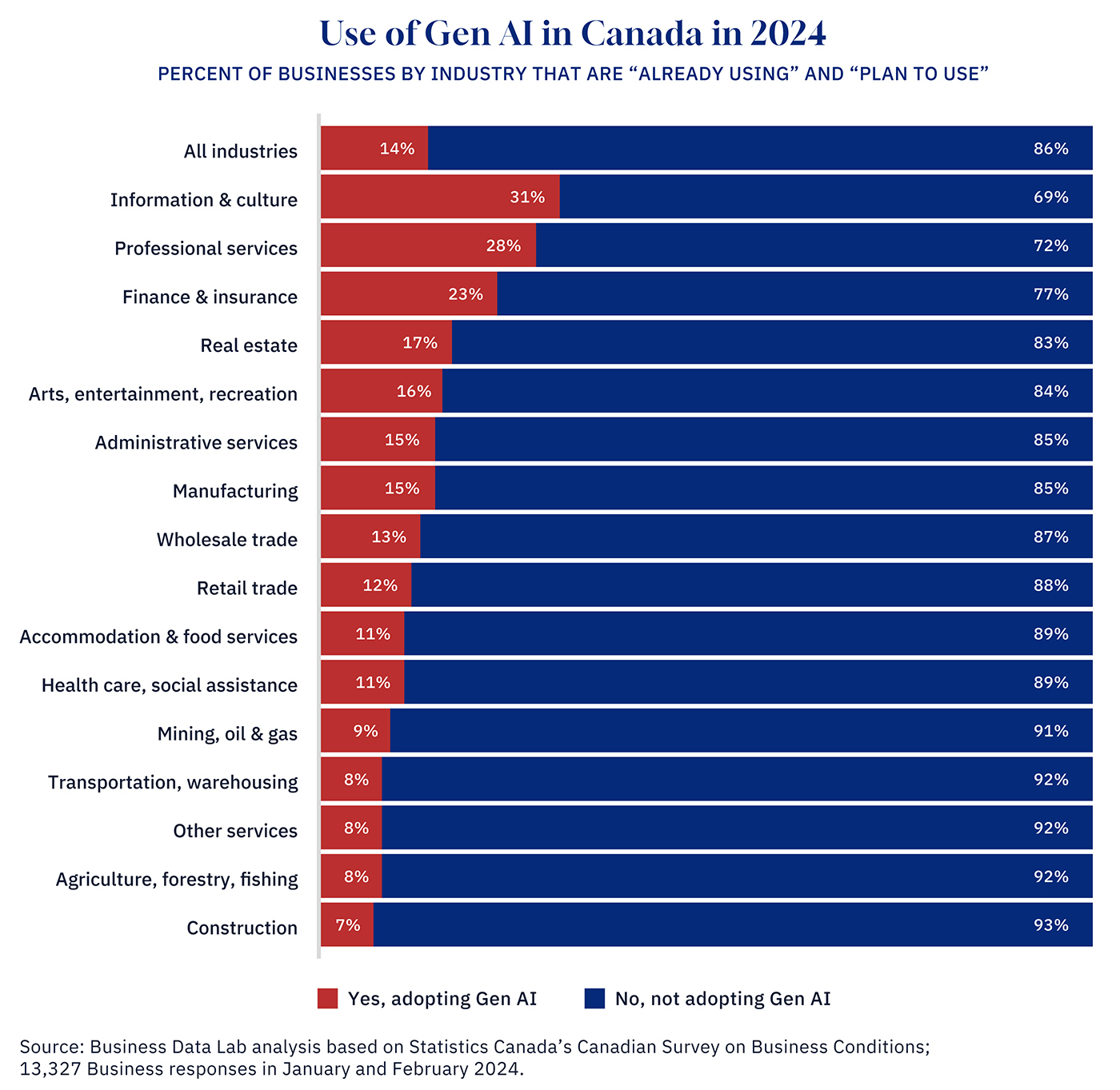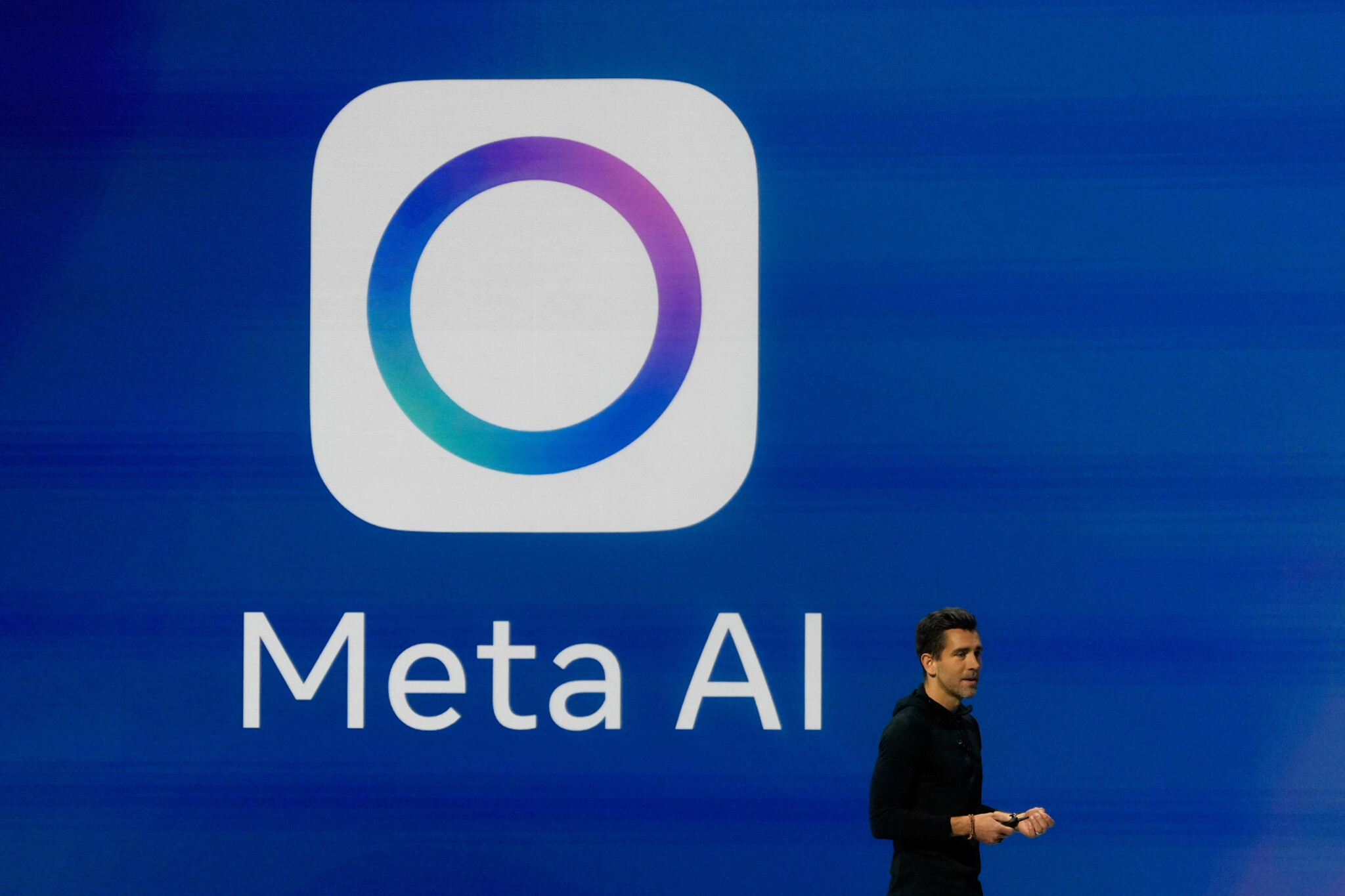It’s well-tread territory by now that artificial intelligence is moving up the global policy agenda. Government, industry, civil society, and academia of all kinds are looking for meaningful direction on how to leverage AI to turbocharge our economies, global policy coordination, governance, and a roadmap towards economic opportunity, innovation, and competitiveness.
That matters because economic growth and productivity are lacking globally. What was once a 4 percent annual trend is now predicted to be about 3 percent going forward. Canada’s outlook is far worse: our economic growth barely keeps pace with population and inflation, and the OECD projects Canada will have the slowest per capita growth in the G7 over the next decade.

Graphic credit: Janice Nelson
Canada faces a choice: settle into a low-growth equilibrium or aim higher.
AI offers a rare opportunity for the latter. Like electricity and computing before it, AI is a general-purpose technology with the potential to boost productivity across industries. TD Economics forecasts a 5-8 percent GDP uplift from generative AI within a decade, equivalent to about 0.5 percent added annually. And open-source AI in particular offers a transparent, competitive advantage.
AI doesn’t automate human capability; it augments it. It enables more creative work, reduces drudgery, and improves quality of life. As investor David Frieberg notes, we could be on the brink of an “AI-abundant future.”
But to realize that future, Canada must not only invest in research but aggressively expand adoption and commercialization, particularly in sectors where uptake remains low.
Canada’s AI edge and the innovation imperative
Canada helped lay the groundwork for modern AI through researchers like Geoffrey Hinton and Yoshua Bengio; it is home to major AI labs in Toronto, Montreal, and Edmonton, and coordinated joint stakeholder efforts like the Pan-Canadian AI Strategy.
Yet that leadership is fading. While Canada leads in AI talent growth, according to one analysis, we trail in adoption—badly. According to a report from Deloitte, only a quarter of Canadian firms use AI, compared to a third globally. In 2024, Canada actually fell from fourth to eighth in AI readiness. Just 14 percent of businesses were using or planning to use generative AI. Trust is also low: 31 percent of Canadians trust AI, far below the global average.
Barriers include capital gaps, talent drain, policy uncertainty, and public hesitation. But the result is clear: Canada’s AI adoption deficit could cost us up to 8 percent of GDP growth over the next decade.
Since the AI Action Summit in Paris, we’ve seen significant shifts in the policy debate around AI to focus on innovation, implementation, and economic growth. On the eve of the G7 in Kananaskis, Alberta, where AI will be a key priority, we should continue these discussions to ensure the G7 economies have the necessary prerequisites to unlock the full benefits of AI, drive economic growth, and improve their constituents’ lives.
Canada is at a decision point. We need a distinct strategy.
Canada’s appointment of an AI minister is a good start. A dedicated minister signals ownership and accountability to ensure Canada doesn’t lose sight of the usage of AI to build the “economy of the future.”
The holder of that office signalled he understood the urgency in comments to the Canada 2020 conference this week. “Canada cannot be left behind,” Evan Solomon said. “We need to marshal our resources and advance our position in this high-stakes digital arena. So we’ve got to act now.”
On the global stage, Canada should argue that democratic and like-minded nations can best shape AI by leading its development. Overregulation won’t stop risky actors—it will just sideline responsible innovators and transfer the risk to other countries with an entirely different set of values. A confident, cooperative model rooted in Western values and open participation offers a better path to both prosperity and safety.
Open-source AI: What it is and why it matters
The knee-jerk answer to AI risks is to over-regulate it, including even proposals to slow its deployment and adoption. A much better approach is to foster an open AI ecosystem that’s inclusive, transparent, and collaborative. Open research and open models are the answer. Rather than introduce more government regulation, we should democratize the technology so everyone has access and can understand it.
When many eyes can see and test AI systems, problems are spotted earlier—a test and verify method. When researchers globally can access cutting-edge AI tools, it expands the range of applications and uses. Democratization takes it out of the hands of a small number of players and ensures that AI’s trajectory (and its benefits) is far more shared.
If thousands of companies and researchers are all working with AI, it becomes much harder for any one actor to cause disproportionate harm without being noticed and countered by others. This is analogous to cybersecurity, where broadly shared knowledge of threats and defenses creates a resilient network by identifying the risks and vulnerabilities, whereas security-by-obscurity often fails. Openness and collaboration, in short, can be powerful tools for risk mitigation.
Herein lies the case for open-source AI. It refers, in broad terms, to AI systems (often large machine learning models) whose code or trained parameters are made openly available for others to study, use, and build upon. This is analogous to open-source software, where the source code of a program is public.
How does this work? Traditionally, cutting-edge AI models were developed behind closed doors by tech giants and kept proprietary. Only those companies had the resources to train them on massive datasets, and only they could deploy them. Open-source AI turns this on its head by democratizing access. For example, an open-source language model might be released with its weights downloadable. Any developer or company can then download the model, run it on their own hardware or cloud, and even fine-tune it for specific tasks. They can also inspect the model’s internals and share improvements.

A person works on a laptop at a coworking office space in Meridian, Idaho, April 18, 2024. Kyle Green/AP Photo.
Importantly, open source AI also has the potential to power significant economic growth for Canada, growing our GDP by a magnitude and making Canada more innovative and competitive globally. It is a catalyst for productivity growth, offering unparalleled opportunities for individuals, businesses, and enterprises across the country. And because open source models like Meta’s Llama are free to use, any developer with an idea can build a tool and start a company.
Meta made waves in 2023 by releasing its first Llama models that were free for both research and commercial use. Its release was a watershed moment: it put a powerful language model into the hands of anyone with an internet connection.
Open models like Llama are revolutionizing the way industries operate, and innovators around the world are turning to Llama for countless niche applications: from education to agriculture, construction, and manufacturing, AI-driven solutions are already enhancing productivity, improving efficiency, and enabling smarter business decisions. Small companies that could never build a large model from scratch were suddenly integrating Llama into their products. Researchers probed Llama to understand limitations, which in turn led to discussions on how to make it safer.
Meta reports that there have been more than 1.2 billion downloads of all Llama models as of April 2025—remarkable community-driven momentum that proprietary models struggle to match.
For Canada, in particular, Meta’s open-source leadership is a boon. Consider that Meta has a Fundamental AI Research (FAIR) lab in Montreal and significant technical talent in Toronto and Vancouver. The open research and models they produce can become a backbone for Canadian AI startups and companies, and even government projects, without onerous licensing costs that would cost shareholders or taxpayers even more.
A concrete example of how Llama is being used in other markets: The African Union Development Agency (AUDA-NEPAD), in collaboration with Deloitte, launched AKILI AI, an AI-Driven MSME Support Platform designed to empower Micro, Small, and Medium Enterprises (MSMEs) across Africa. The platform leverages Llama and other cutting-edge AI technologies to provide MSMEs with the tools they need to thrive and to help address obstacles such as limited access to finance, issues in navigating markets, and inadequate tailored advisory support.
Open-source models such as Llama are essential for driving business impact, job creation, transforming traditional sectors, and ensuring that Canadian businesses can compete in global markets.
Call to action
Canada stands at a crossroads in its economic future. We have an opportunity to choose an innovation-forward vision for AI as a driver of productivity, growth, and better lives. An open opportunity.
That doesn’t mean ignoring real concerns around AI safety. It means addressing them through collaboration, not constraint. Innovation and safety aren’t opposites. They go hand in hand.
At home, we need to scale adoption, invest in AI skills and infrastructure, and resolve policy uncertainty that could stifle a Canada-wide approach. We should work with industry to eliminate barriers in key sectors underpinning the Canadian economy, like energy, manufacturing, and agriculture.
Abroad, we should align with partners to ensure global AI governance remains open, adaptive, and pro-innovation. We must also help extend AI tools to developing countries to ensure the Global South isn’t left behind from the benefits of AI.
Let’s face this moment with earned optimism. Prime Minister Carney has signalled that an enfeebled Canadian economy must be restructured to ensure that we are the strongest economy in the G7, and to achieve this ambitious goal, we must harness the transformative power of AI, embracing its potential to drive innovation, boost productivity, and propel Canada to the forefront of the global economy.
This article was made possible by Meta and the generosity of readers like you. Donate today.










